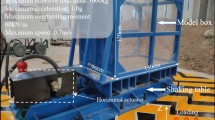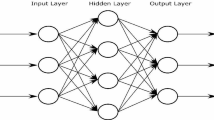Abstract
Post-earthquake damages investigation in past and recent earthquakes has illustrated that the building structures are vulnerable to severe damage and/or collapse during moderate to strong ground motion. Among the possible structural damages, seismic induced pounding has been commonly observed in several earthquakes. A parametric study on buildings pounding response as well as proper seismic hazard mitigation practice for adjacent buildings is carried out. Three categories of recorded earthquake excitation are used for input excitations. The effect of impact is studied using linear and nonlinear contact force model for different separation distances and compared with nominal model without pounding consideration. The severity of the impact depends on the dynamic characteristics of the adjacent buildings in combination with the earthquake characteristics. Pounding produces acceleration and shear forces/stresses at various story levels that are greater than those obtained from the no pounding case, while the peak drift depends on the input excitation characteristics. Also, increasing gap width is likely to be effective when the separation is sufficiently wide to eliminate contact. Furthermore, it is effective to provide a shock absorber device system for the mitigation of impact effects between adjacent buildings with relatively narrow seismic gaps, where the sudden changes of stiffness during poundings can be smoothed. This prevents, to some extent, the acceleration peaks due to impact. The pounding forces exerted on the adjacent buildings can be satisfactorily reduced.














Similar content being viewed by others
References
Abdel Raheem SE (2006) Seismic pounding between adjacent building structures. Electron J Struct Eng. University of Melbourne 6:66–74
Abdel Raheem SE (2009) Pounding mitigation and unseating prevention at expansion joint of isolated multi-span bridges. Eng Struct 31(10):2345–2356
Abdel Raheem SE (2013a) Evaluation and mitigation of earthquake induced pounding effects on adjacent buildings behavior. The 2013 world congress on advances in structural engineering and mechanics. ASEM13 Congress, Jeju, Korea, September 8–12, Paper ID MS509\_201
Abdel Raheem SE (2013b) Mitigation measures for seismic pounding effects on adjacent buildings responses. 4th conference of computational mechanics, structural dynamics and earthquake engineering, COMPDYN 2013, Kos Island, Greece, 12–14 June, Paper ID 1699
Abdel Raheem SE, Hayashikawa T (2003) Parametric study on steel tower seismic response of cable-stayed bridges under great earthquake ground motion. JSCE Struct Eng Earthq Eng 20(1):25–41
Abdullah MM, Hanif JH, Richardson A, Sobanjo J (2001) Use of a shared tuned mass damper (STMD) to reduce vibration and pounding in adjacent structures. Earthq Eng Struct Dyn 30:1185–1201
Anagnostopoulos SA (1988) Pounding of buildings in series during earthquakes. Earthq Eng Struct Dyn 16:443–456
Anagnostopoulos SA, Karamaneas CE (2008) Use of collision shear walls to minimize seismic separation and to protect adjacent buildings from collapse due to earthquake-induced pounding. Earthq Eng Struct Dyn 37:1371–1388
Astaneh-Asl A, Bolt B, McMullin K, Donikian RR, Modjtahedi D, Cho SW (1994) Seismic performance of steel bridges during the 1994 Northridge earthquake. University of California, Berkeley, Report No UCB/CEE-Steel-94/01
Barbato M, Tubaldi E (2013) A probabilistic performance-based approach for mitigating the seismic pounding risk between adjacent buildings. Earthq Eng Struct Dyn 42:1203–1219
Bertero VV (1996) Implications of observed pounding of buildings on seismic code regulations. 11th world conference on earthquake engineering, Acapulco, Mexico, 23–28 June, Paper No 2102
Chau KT, Wei XX (2001) Pounding of structures modelled as non-linear impacts of two oscillators. Earthq Eng Struct Dyn 30:633–651
Chau KT, Wei XX, Guo X, Shen CY (2003) Experimental and theoretical simulations of seismic pounding between adjacent structures. Earthq Eng Struct Dyn 32(4):537–554
Cole GL, Dhakal RP, Carr AJ, Bull DK (2011) Case studies of observed pounding damage during the 2010 Darfield earthquake. In: 9th pacific conference on earthquake engineering building an earthquake-resilient society, Auckland, New Zealand, 14–16 April, paper no 173
Cole GL, Dhakal RP, Turner FM (2012) Building pounding damage observed in the 2011 Christchurch earthquake. Earthq Eng Struct Dyn 41(5):893–913
Committee of Earthquake Engineering (1996) The 1995 Hyogoken-Nanbu earthquake, investigation into damage to civil engineering structures. Jpn Soc Civil Eng
Davis RO (1992) Pounding of buildings modelled by an impact oscillator. Earthq Eng Struct Dyn 21:253–274
EERI (1995) Northridge earthquake of January 17, 1994, Reconnaissance report. In: Holmes WT, Somers P (eds), vol 2 Supplement C to volume 11 of earthquake spectra. Earthquake Engineering Research Institute, Oakland, California, pp 25–47
EERI (2009) L’Aquila. Italy earthquake clearing house observations from-EERI/PEER team, Earthquake Engineering Research Institute
Gillies AG, Anderson DL, Mitchell D, Tinawi R, Saatcioglu M, Gardner NJ, Ghoborah A (2001) The August 17, 1999, Kocaeli (Turkey) earthquake: lifelines and preparedness. Can J Civ Eng 28:881–890
Hao H, Zhang S (1999) Spatial ground motion effect on relative displacement of adjacent building structures. Earthq Eng Struct Dyn 28:333–349
Hayashikawa T, Hirooka T, Ikeda K, Abdel Raheem SE (2002) Dynamic behavior of viaducts with PC cables in consideration of pounding of girders and energy absorption. In: Proceedings of Hokkaido chapter of the Japan Society of civil engineers, vol 59, pp 50–53
Jankowski R (2005) Non-linear viscoelastic modelling of earthquake-induced structural pounding. Earthq Eng Struct Dyn 34:595–611
Jankowski R (2006) Pounding force response spectrum under earthquake excitation. Eng Struct 28:1149–1161
Jankowski R, Wilde K, Fujino Y (2000) Reduction of pounding effects in elevated bridges during earthquakes. Earthq Eng Struct Dyn 29:195–2120
Kajita Y, Kitahara T, Nishimoto Y, Otsuka H (2006) Estimation of maximum impact force on natural rubber during collision of two steel bars. 1st European conference on earthquake engineering and seismology (1st ECEES), Geneva, Switzerland, September 3–8
Kajita Y, Nishimoto Y, Ishikawa N, Watanabe E (2001) Energy absorption capacity of the laminated fiber reinforced rubber installed at girder ends. High Performance Materials in Bridges. In: International conference on high performance materials in Bridges, Kona, Hawaii, USA, July 29–August 3, pp 183–192
Kasai K, Jagiasi AR, Jeng V (1996) Inelastic vibration phase theory for seismic pounding mitigation. J Struct Eng 122(10):1136–1146
Kasai K, Maison BF (1991) Observation of structural pounding damage from 1989 Loma Prieta earthquake. In: 6th Canadian conference of earthquake engineering, Toronto, Canada, pp 735–742
Kasai K, Maison BF, Jeng V, Patel DJ, Patel PC (1991), A study of earthquake pounding between adjacent structures. In: 6th Canadian conference of earthquake engineering, Toronto, Canada, pp 93–100
Kawashima K, Shoji G (2000) Effect of restrainers to mitigate pounding between adjacent decks subjected to a strong ground motion. In: 12th world conference on earthquake engineering, Auckland, New Zealand, paper no 1435
Kawashima K, Shoji G, Koshitoge M, Shimanoe S (2002) Design of an earthquake-resistant expansion joint with unseating prevention system. FIB Congress, E-282, Osaka, Japan
Komodromos P, Polycarpou P, Papaloizou L, Phocas MC (2007) Response of seismically isolated buildings considering poundings. Earthq Eng Struct Dyn 36:1605–1622
Lopez-Garcia D (2004) Separation between adjacent nonlinear structures for prevention of seismic pounding. In: 13th world conference on earthquake engineering, Vancouver, Canada, paper no 478
Lopez-Garcia D, Soong TT (2009) Evaluation of current criteria in predicting the separation necessary to prevent seismic pounding between nonlinear hysteretic structural systems. Eng Struct 31:1217–1229
Masroor A, Mosqueda G (2012) Experimental simulation of base-isolated buildings pounding against moat wall and effects on superstructure response. Earthq Eng Struct Dyn 41(14):2093–2109
Moehle JP (1995) Northridge earthquake of January 17, 1994: Reconnaissance report. Volume 1—Highway bridges and traffic management. Earthq Spectra 11(C):287–372
Muthukmar S (2003) A contact element approach with hysteresis damping for the analysis and design of pounding in bridges. Ph. D Thesis Presented to The Academic Faculty, Civil and Environmental Engineering, Georgia Institute of Technology
Muthukmar S, DesRochs R (2004) Evaluation of impact models for seismic pounding. 13th world conference on earthquake engineering, Vancouver, Canada, Paper no 235
Pantelides CP, Ma X (1998) Linear and nonlinear pounding of structural systems. Comput Struct 66(1):79–92
Penzien J (1997) Evaluation of building separation distance required to prevent pounding during strong earthquakes. Earthq Eng Struct Dyn 26:849–858
Polycarpou PC, Komodromos P (2011) Numerical investigation of potential mitigation measures for poundings of seismically isolated buildings. Earthq Struct 2(1):1–24
Polycarpou PC, Komodromos P (2010) Earthquake-induced poundings of a seismically isolated building with adjacent structures. Eng Struct 32:1937–1951
Polycarpou PC, Komodromos P, Polycarpou AC (2013) A nonlinear impact model for simulating the use of rubber shock absorbers for mitigating the effects of structural pounding during earthquakes. Earthq Eng Struct Dyn 42:81–100
Ruangrassamee A, Kawashima K (2001) Relative displacement response spectra with pounding effect. Earthq Eng Struct Dyn 30(10):1511–1538
Ruangrassamee A, Kawashima K (2003) Control of nonlinear bridge response with pounding effect by variable dampers. Eng Struct 25:593–606
Sadek AW, Solaiman A, Baraka MA (2000) GIS-based earthquake damage analysis in the greater Cairo area. In: 12th world conference on earthquake engineering, Auckland, New Zealand, 30 January–February, Paper no 2255
Shim VPW, Yang LM, Lim CT, Law PH (2004) A visco-hyperelastic constitutive model to characterize both tensile and compressive behavior of rubber. J Appl Poly Sci 92:523–531
Takewaki I, Murakami S, Fujita K, Yoshitomi S, Tsuji M (2011) The 2011 off the Pacific coast of Tohoku earthquake and response of high-rise buildings under long period ground motions. Soil Dyn Earthq Eng 31:1511–1528
Author information
Authors and Affiliations
Corresponding author
Rights and permissions
About this article
Cite this article
Abdel Raheem, S.E. Mitigation measures for earthquake induced pounding effects on seismic performance of adjacent buildings. Bull Earthquake Eng 12, 1705–1724 (2014). https://doi.org/10.1007/s10518-014-9592-2
Received:
Accepted:
Published:
Issue Date:
DOI: https://doi.org/10.1007/s10518-014-9592-2




